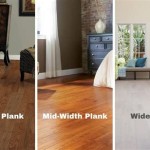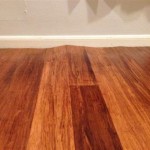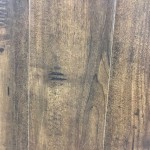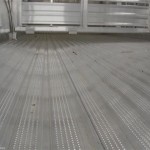What Is the Best Wood Flooring for a Kitchen Island?
A kitchen island is a versatile space that can serve many purposes, from prepping food and entertaining guests to providing additional storage and seating. Choosing the right flooring for your kitchen island is crucial to creating a functional and aesthetically pleasing space that complements the rest of your kitchen design. While numerous flooring options are available, wood flooring remains a popular choice for kitchen islands due to its beauty, durability, and warmth. However, with various wood species, finishes, and installation methods, selecting the best wood flooring for your kitchen island can be overwhelming.
This article explores the key factors to consider when choosing wood flooring for a kitchen island, highlighting the best wood species and finishes that can withstand heavy foot traffic, spills, and potential damage. It also delves into different installation methods and maintenance tips, ensuring you make an informed decision that meets your needs and preferences.
Wood Species for Kitchen Island Flooring
The choice of wood species significantly impacts the durability, appearance, and cost of your kitchen island flooring. Here are some of the best wood species commonly used for kitchen island flooring:
Hardwoods
Hardwoods are known for their durability, resistance to scratches and dents, and attractive grain patterns. Some popular hardwood choices for kitchen islands include:
- Oak: One of the most popular hardwood choices, oak is durable, resistant to scratches, and available in various finishes. It offers a classic look that complements many kitchen styles.
- Maple: Another excellent choice for kitchen islands, maple is hard, dense, and resistant to scratches and dents. It is known for its light color and tight grain, making it suitable for modern and contemporary kitchens.
- Cherry: Cherry wood is known for its rich reddish-brown color and beautiful grain patterns. It is slightly softer than oak and maple but still durable enough for high-traffic areas.
- Hickory: Hickory wood is a very hard and durable option, known for its unique grain patterns and rustic appearance. It is a good choice for kitchens with a farmhouse or industrial style.
- Walnut: Walnut is a beautiful hardwood with a rich, dark color and striking grain patterns. It is relatively soft but still durable enough for kitchen islands, offering a luxurious and elegant touch.
Engineered Wood
Engineered wood flooring is a more affordable alternative to solid hardwood, offering similar aesthetic appeal and durability. It consists of layers of wood veneer glued together, making it less susceptible to warping and shrinking than solid hardwood.
- Engineered oak: This is a popular choice for kitchen islands, offering a blend of affordability, durability, and aesthetic appeal.
- Engineered maple: A more affordable option than solid maple, engineered maple is still durable and offers a beautiful light color and fine grain.
Finishes for Kitchen Island Flooring
The finish you choose for your kitchen island flooring significantly impacts its durability, appearance, and maintenance requirements. Here are some common finishes for wood flooring:
Staining
Staining adds color, depth, and dimension to wood, enhancing its natural grain patterns. It can be used to create various looks, from natural light shades to deep, rich colors.
Sealing
Sealing protects the wood from moisture, stains, and scratches, ensuring its long-term durability. Common sealing options include:
- Polyurethane: A durable and water-resistant finish available in gloss, semi-gloss, and satin finishes.
- Oil-based finishes: Offer a more natural look and feel and penetrate deeper into the wood, making it more durable.
- Water-based finishes: Faster drying time, low odor, and environmentally friendly, but less durable than oil-based finishes.
Installation Methods for Kitchen Island Flooring
Wood flooring can be installed using different methods, each with its benefits and drawbacks. The most common installation methods for kitchen island flooring include:
Nail-Down Installation
This traditional method involves nailing the flooring directly to the subfloor. It is best suited for solid hardwood flooring and requires a solid subfloor with proper moisture control.
Glue-Down Installation
This method uses adhesive to secure the flooring to the subfloor. It is suitable for both solid and engineered wood flooring and is ideal for uneven subfloors or when nailing is not an option.
Floating Installation
A floating installation involves laying the flooring over a moisture barrier and attaching it to the subfloor with a tongue-and-groove system. This method is ideal for engineered wood flooring and offers some sound insulation.

The Best Types Of Hardwood Flooring For Kitchens Renaissance Floors

5 Ideas For The Best Kitchen Flooring

The Best Wood Flooring For Kitchens Ted Todd Fine Floors

90 Modern Kitchen Island Ideas To Transform Your Home In 2025

Timeless Elegance Design A Kitchen With Brown Floors Reallyfloors America S Est Hardwood Flooring

Hardwood Flooring Vs Tile For The Kitchen Which Is Best

Kitchen Floor Ideas For Your Home Carpet One

30 Kitchen Flooring Options And Design Ideas

Best Wood Look Flooring Options America

The Best Wood Floors For Your Kitchen How To Choose Arinsolangeathome
Related Posts








